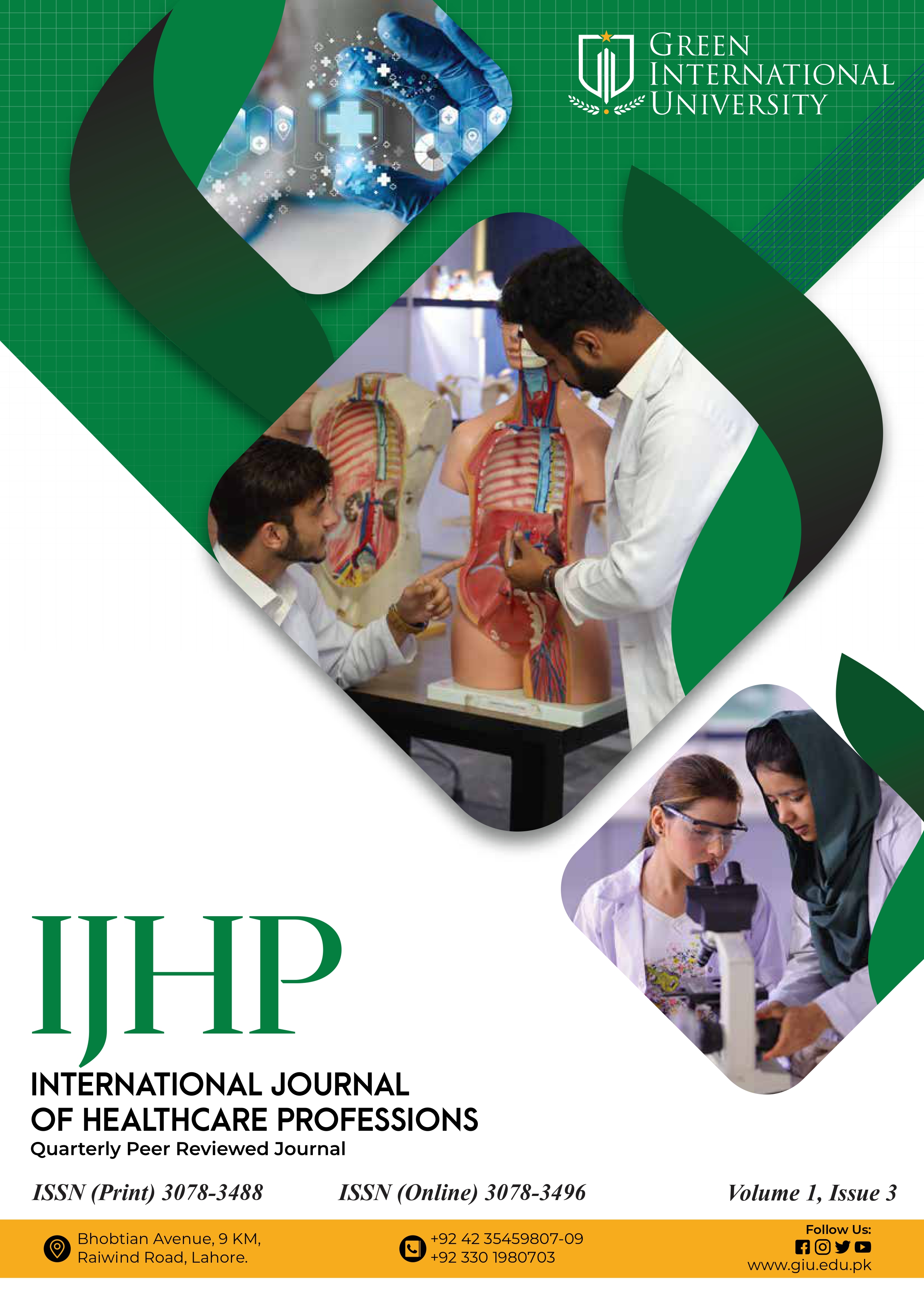Need of Health Policy and System Research for Improvement of EmONC Services in Pakistan
DOI:
https://doi.org/10.71395/ijhp.1.3.2024.1-2Abstract
HPSR can explain the reason as to why a certain policy and practice does or does not work. This is the segment that can be described with more clarity as it delves into those parts where interaction is absolutely essential.
The interaction is very important as HPSR can be described as a process where there is an attempt to measure the pessimistic assumptions that these people have which call for no investment in health systems, interactive systems, and different markets. There are HPSR Policy Studies which discuss Moving Research into Practice And also Global Development with the World Health Organization for instance. Health policy and systems research can be designated as HPSR encompassing multiple elements that do not fit into single descriptive whereas the overreaching aim of HPSR is to evaluate effectual strategies and policies which promote safe and healthy population growth.
Health policy and systems research matter for better decision making and through evidence based. Every day, ministers of health, senior policy makers and health service managers make critical decisions about how to organize the health system and effect changes.
Few would dispute that decisions such as these are likely to lead to better results if they are informed by evidence. Through multiple researches it has been concluded that 97% of grants were for developing new technologies, which could reduce child mortality by
22%. This reduction is one third of what could be achieved if existing technologies were fully utilized (2).
Strengthening service delivery is crucial to the achievement of the health-related Millennium Development Goals (MDGs), which include the delivery of interventions to reduce child mortality, maternal mortality and the burden of HIV/AIDS, tuberculosis and malaria. Life threatening pregnancy related complications take the life of approximately 15% of expected births globally (3). To reduce such complications, the World Health Organization, the United Nations Children’s Fund, and the United Nations Population Fund
How to cite this: Hameed S. Need of Health Policy and System Research for Improvement of EmONC Services in Pakistan, established the workflow for the provision of Emergency Obstetric and Newborn Care which was published in a guidance document in the year 1997.
EmONC services include Basic Emergency Obstetric and Newborn Care (BEmONC): antibiotics’ dosage management, anticonvulsants, uterotonics, removal of retained products, assisted vaginal delivery, placental removal, and revival of newborn; and Comprehensive Emergency Obstetric and Newborn Care: all BEmONC services, surgical capacity, and blood transfusion. This makes a health facility capable of treating obstetric and pregnancy emergencies.
In Pakistan, maternal mortality is a public health concern which needs to be highlighted. Poverty is its most significant determinant that prevents females from receiving education, having nutritious foods and accessing reproductive healthcare services. A study conducted in Pakistan to assess the status of EmONC services concluded that a total of 32 health care facilities were surveyed: 14 (43.75%) providing basic care and 18 (56.25%) providing comprehensive obstetric care. All required signal functions were available at 4 (22%) in the latter category and 3 (21%) in the former category. The met need for EmONC was 17.8% (4). Pakistan has a good healthcare system which encompasses a Basic Health Unit (BHU), a Rural Health Center (RHC) and a tertiary unit. These services are underutilized due to inaccessibility, poor referral system, broken roads, and unavailability of working ambulances hinder the timely transfer of women to hospitals. A cross-sectional survey on emergency obstetric care services revealed that more than 50% of
public health facilities lacked female physicians to provide EmONC services (4). Maternal mortality due to obstetric emergencies can be prevented by strengthening the available healthcare facilities. Moreover, governmental and nongovernmental organizations should implement a focused program for female education, which would consequently reduce the rate of early marriage.
References
WHO. What is Health Policy and Systems Research (HPSR)? WHO; 2012.
Leroy JL, Habicht JP, Pelto G, Bertozzi SM. Current priorities in health research funding and lack of impact on the number of child deaths per year. American journal of public health. 2007 Feb;97(2):219-23.
WHO, UNICEF, UNFPA, World Bank. Trends in maternal mortality: 1990 to 2010. Geneva:
Utz B, Zafar S, Arshad N, Kana T, Gopalakrishnan S, Van Den Broek N. Status of emergency obstetric care in four districts of Punjab, Pakistan results of a baseline assessment. J Pak Med Assoc. 2015 May 1;65(5):480-5.
Downloads
Published
Issue
Section
License
Copyright (c) 2025 International Journal of Healthcare Professions

This work is licensed under a Creative Commons Attribution 4.0 International License.
This is an open-access journal and all the published articles / items are distributed under the terms of the Creative Commons Attribution License, which permits unrestricted use, distribution, and reproduction in any medium, provided the original author and source are credited. For comments ijhp@giu.edu.pk






